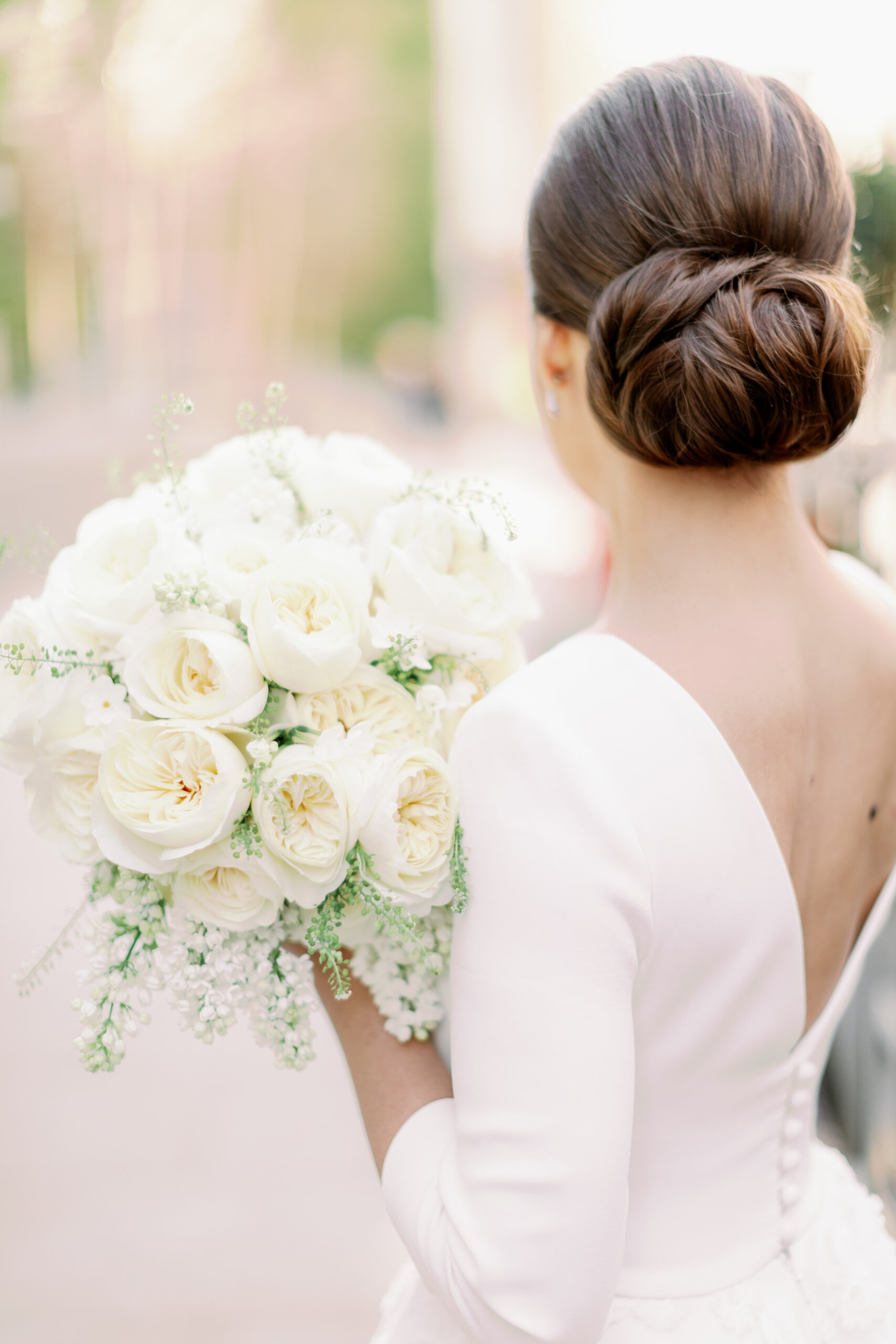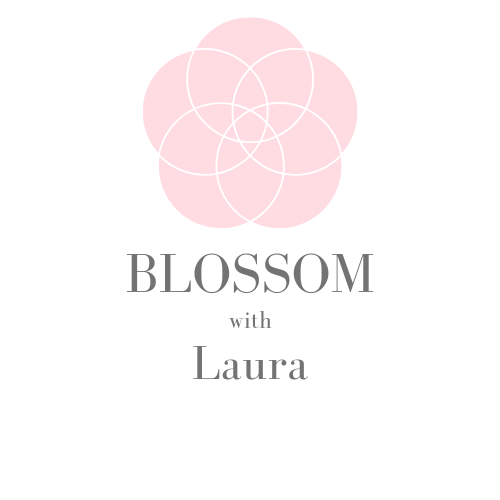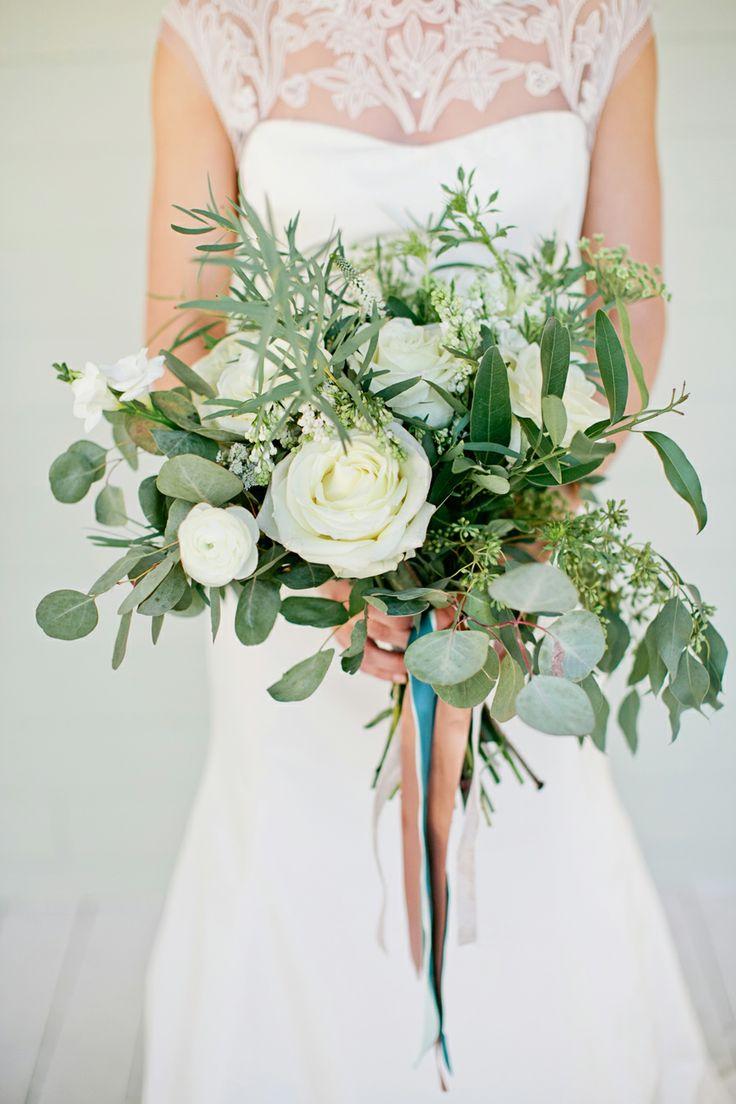Top Tips For Your Wedding Flowers and Table Decor
June, 2023
Written by Blossom with Laura Destination along with French Wedding Suppliers
Wedding florist based in France/UK
Choosing your wedding flowers is one of the most exciting parts of wedding planning, but it's not as simple as picking your favorite blossoms and requesting them in your wedding colours. There are a handful of other details that all impact how to choose wedding flowers, and Laura has outlined them below to help get you up to speed. Ready to go? Here's where to start when designing and ordering your wedding flowers—plus a few insider tips that you can use while working with your wedding florist to perfect the final look. Here is what Laura has to recommend:
After over 40 years in my field as a floral decorator , I have lots of tips regarding flowers and table decor for your wedding…my clients have been varied and some very high profile from royalty worldwide, to film directors, starts and celebs. Our motto at Blossom with Laura is ‘its all in the detail” and we pride ourselves on this, we are a small, personable company, so this is easy to put into practice as either I (Laura) or Jackie will be on site to oversee. Here are 6 of my tips:
1. Book a GOOD florist… ‘an experienced florist is not cheap, a cheap florist is not experienced’, your florist should guide, recommend and is full of hints and tips for weddings decor, she/he is a very good person to know if you are not using a planner.
On top of reading vendor reviews, one of the best ways to find your wedding florist is by word of mouth. Ask for recommendations from newlyweds you know, browse wedding magazines and search hashtags on social media. If you're working with a wedding planner or a professional venue coordinator, they should have recommendations for area florists. Set up appointments or phone calls with a shortlist of florists so you can connect and get a better idea of their work, personality and price range.
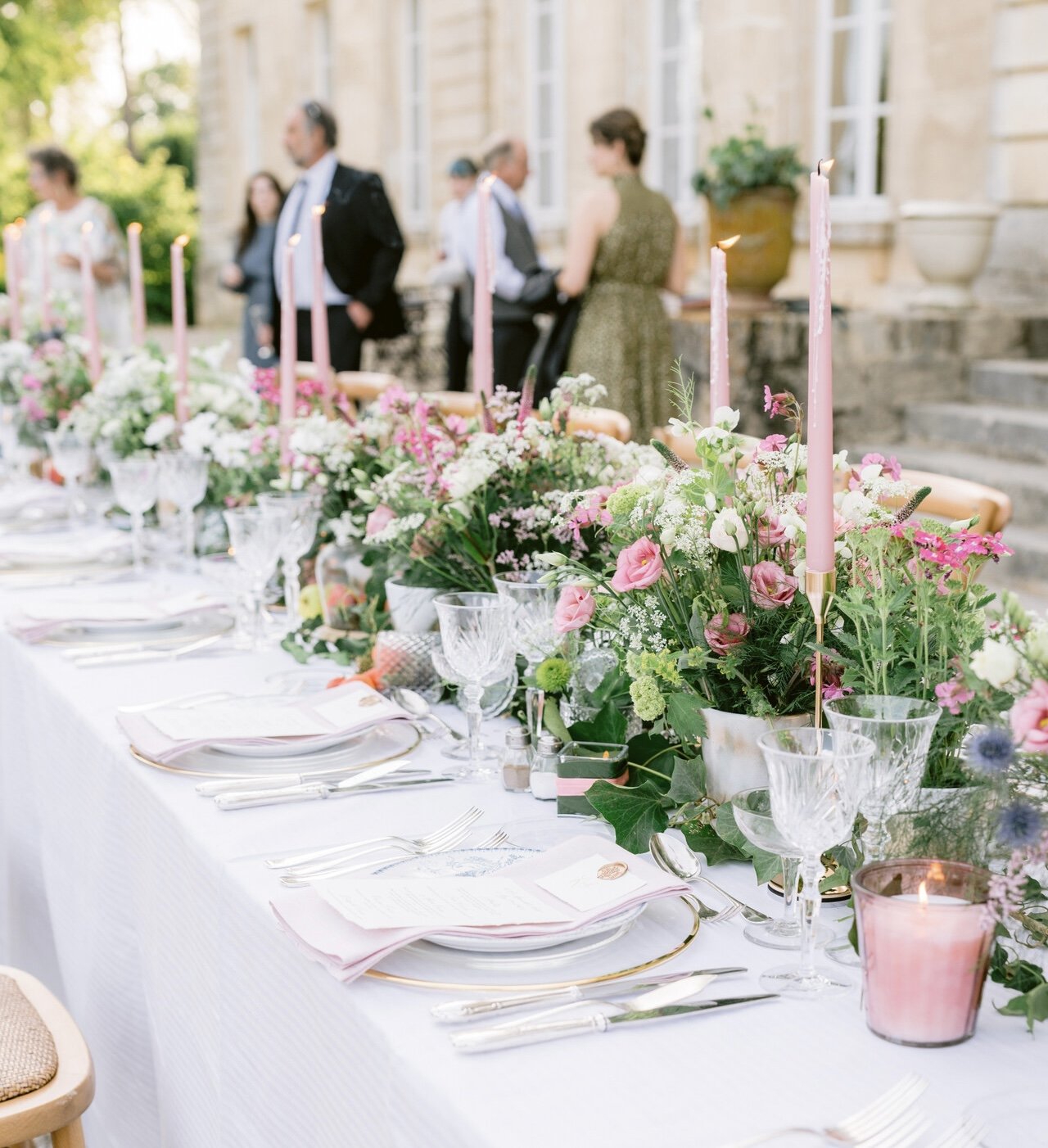
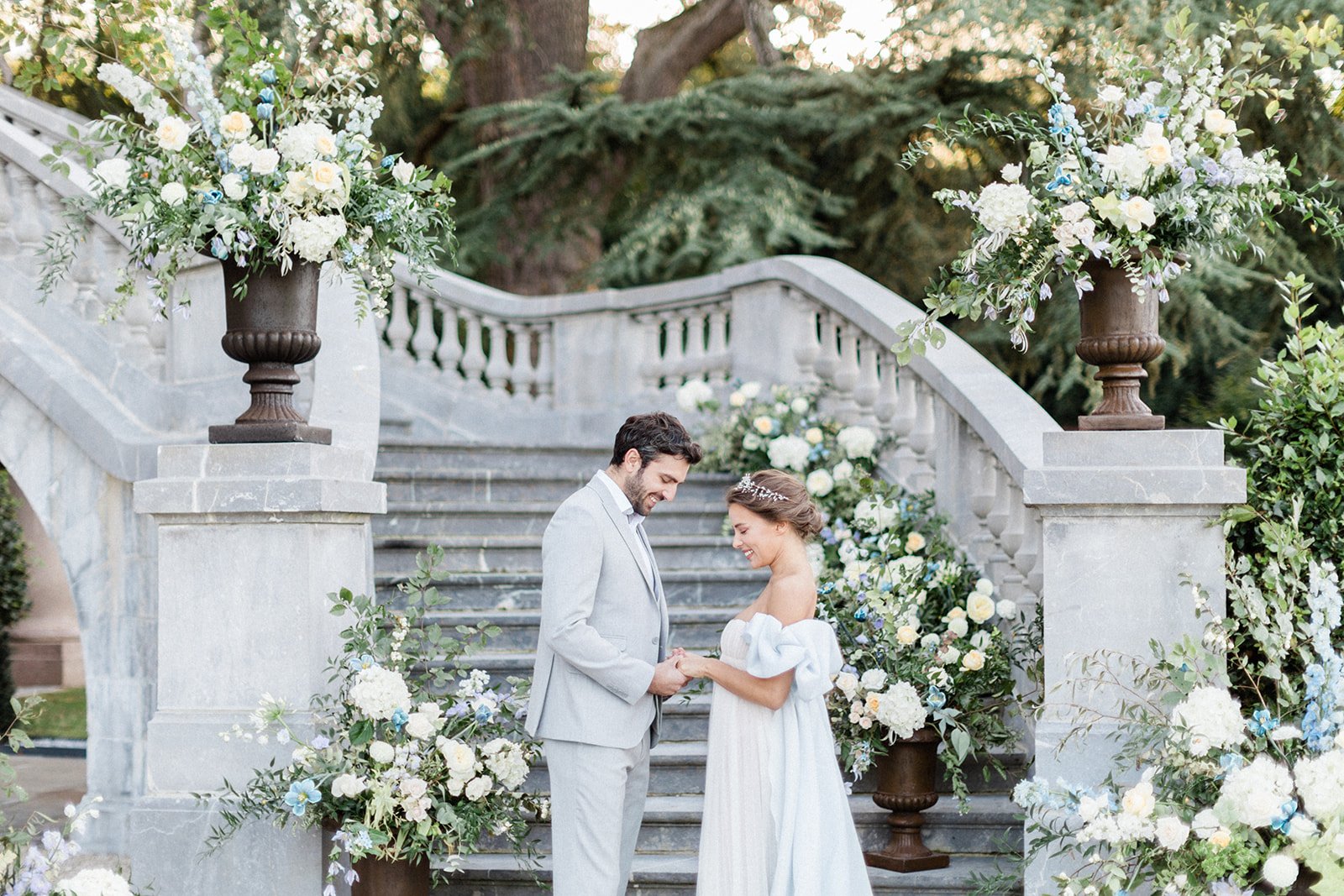
2. Choose seasonal flowers its more cost effective
You may already have a few favorite flowers you want to use for your arrangements, and it's important to communicate that to your wedding florist when you first start working together. But it's also important to keep an open mind and remember that certain flowers may not be available or may cost more, depending on their availability and your wedding season. Remember: Not every type of flower is readily available year-round, so if you're insisting on using very specific blooms, be prepared to spend more money or consider similar alternatives.
Using in-season wedding flowers is just one way you can cut costs. Those flowers are more abundant and easily sourced around the time that you're getting married, which means that your florist won't have to work too hard—or use too much of your budget—to find them from growers. Talk to your florist about the in-season flowers during your wedding month and try to make those stems the mainstay of your arrangements, then add a few "splurge" flowers as accents.
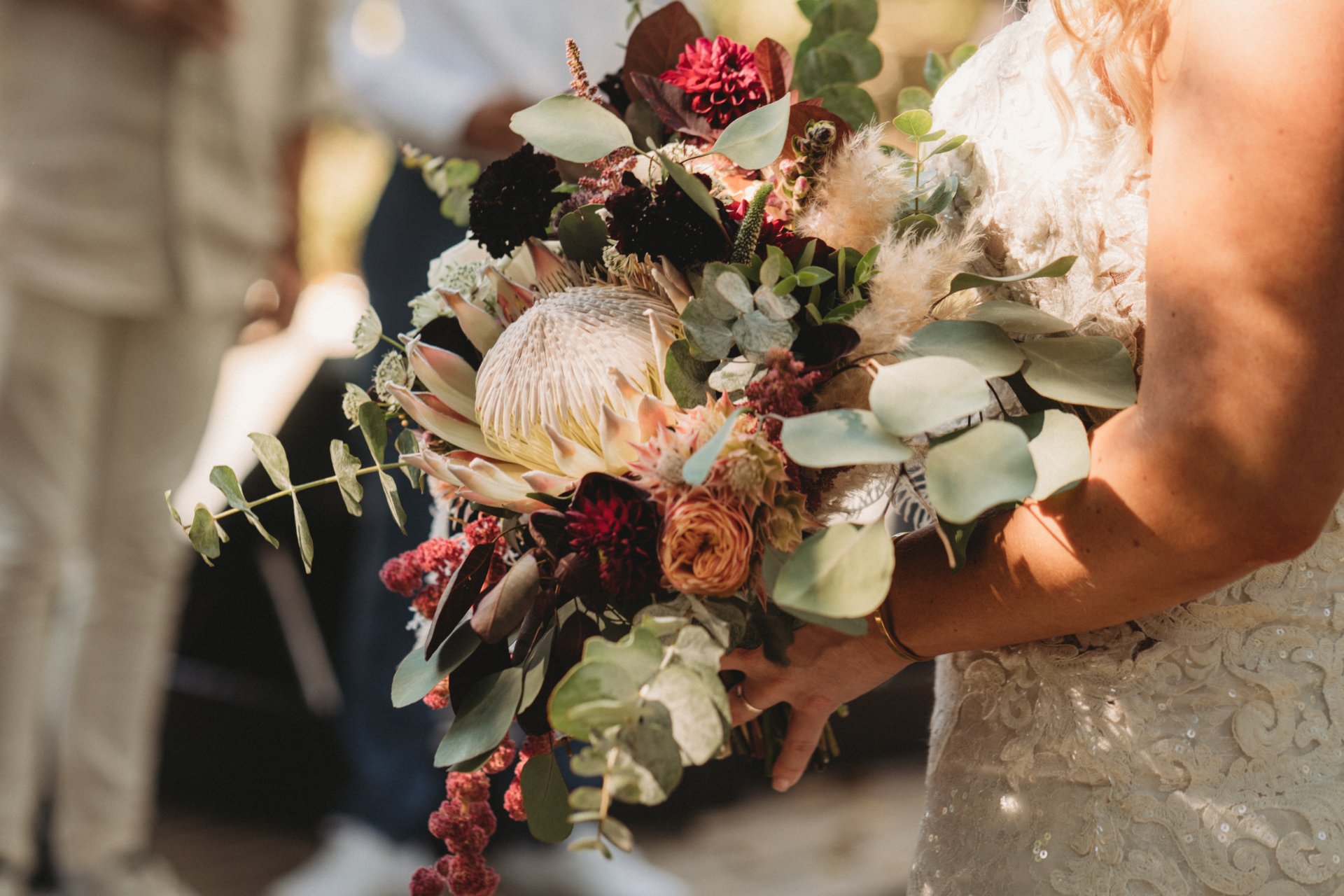

3. If your having tablecloths at your wedding breakfast, make sure they drape to the floor, elegant, (nothing worse than seeing those table legs)
4. Garlands are lovely on the table but if you are seated outside in the sunshine, the garland could look very weary by the time you are seated for your meal as the greenery and flowers may not be in water. The same is true when you choose a floral arch for your ceremony
5. Incorporate flower symbolism and other meaningful touches
If you're looking for even more ways to personalize your flowers, tap into the symbolism behind each bloom. During the Victorian Era, the "language of flowers" was everything—the Victorians believed that each type of flower held a special meaning, and they even used flowers to send coded messages. Red roses and red tulips are a declaration of love and passion, while orchids symbolize refinement and beauty. While the practice isn't as well-known today, it's a fun way to add even more meaning to your celebration.
You can also finish your arrangements with special embellishments or other blooms that hold personal significance (for example, Kate Middleton added 'sweet William' flowers to her bouquet as a nod to her future husband). Consider using the same types of flowers that your parents had at their wedding, or wrapping your wedding bouquet with charms or other mementos from a loved one.
6. Taper candles on the tables, make sure at least some of them have a glass shade, as if outside, a slight breeze and they will blow out.
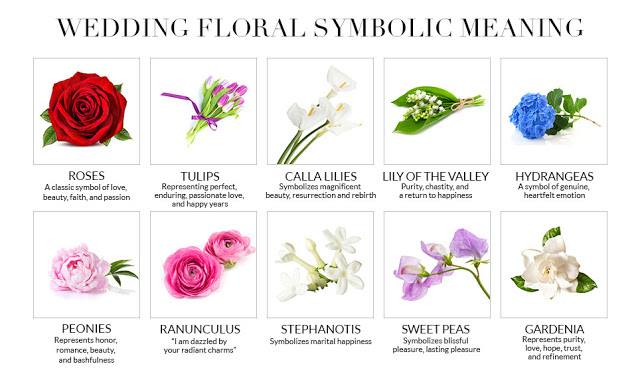
7. Make a list of all the wedding flower arrangements you'll need
You probably know that you need bouquets and centerpieces, but there are other wedding flower arrangements to consider too. Things like boutonnieres, ceremony altar arrangements, aisle markers and garlands are just a few examples of additional flowers you might need. The list of arrangements can impact your overall decor and budget, so work with your florist to determine exactly what's essential for your special day and what you might be able to skip.
One way you can make sure you're covering all your bases—without breaking the bank—is to recycle your wedding flowers when possible throughout the day. Your ceremony will probably last less than an hour (or maybe even less than 15 minutes!), so it would be a shame to let a statement floral arch go to waste. Ask your florist about repurposing it for the reception—they can plan ahead to use it as a backdrop for your sweetheart table, escort card display or other reception decor element. Alternatively, use ceremony aisle arrangements to accent the cake table or bridesmaid bouquets to add pops of colour to vases in the bathroom. If you want even more ideas, talk to your florist about how you can reuse arrangements to get the most bang for your buck.
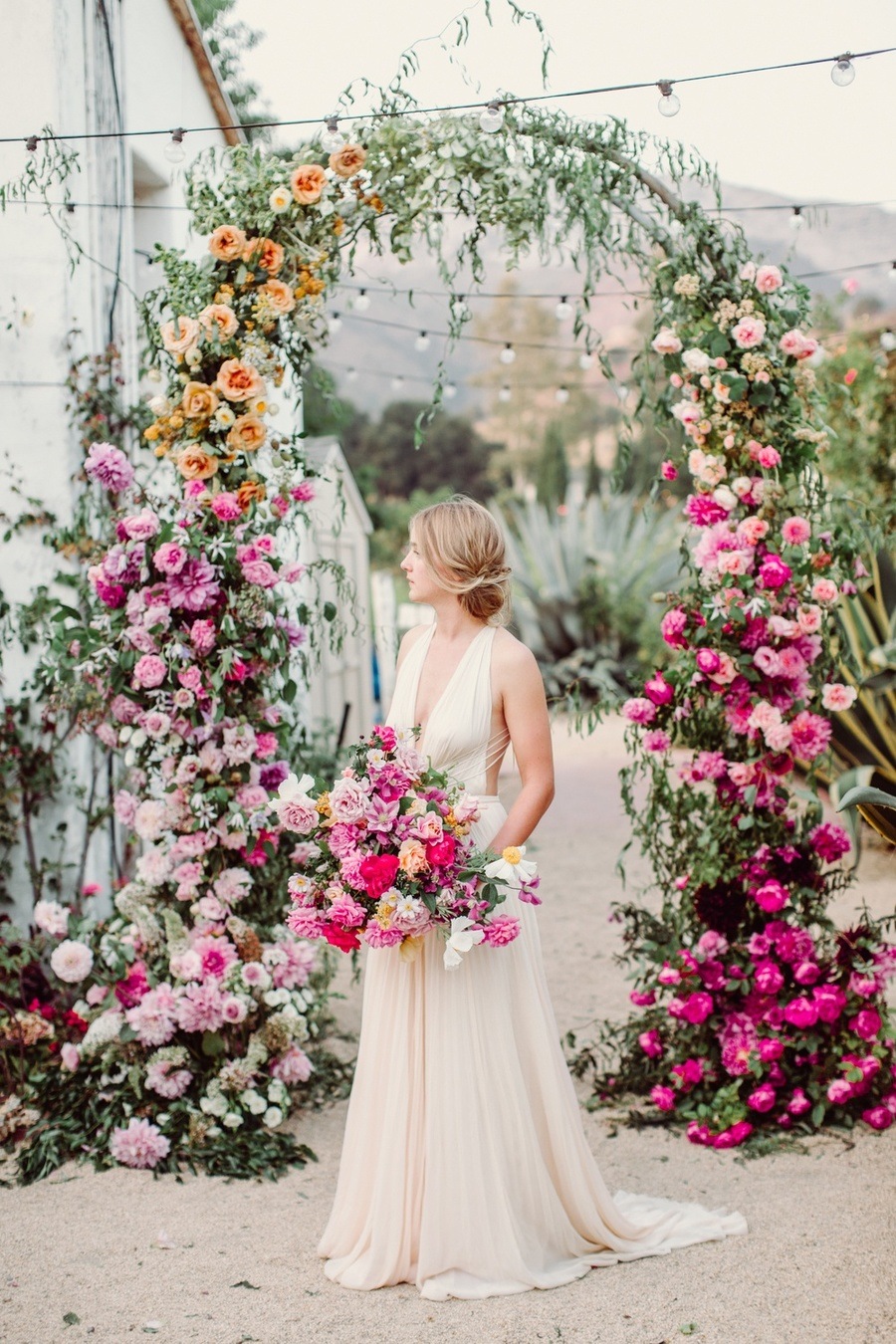
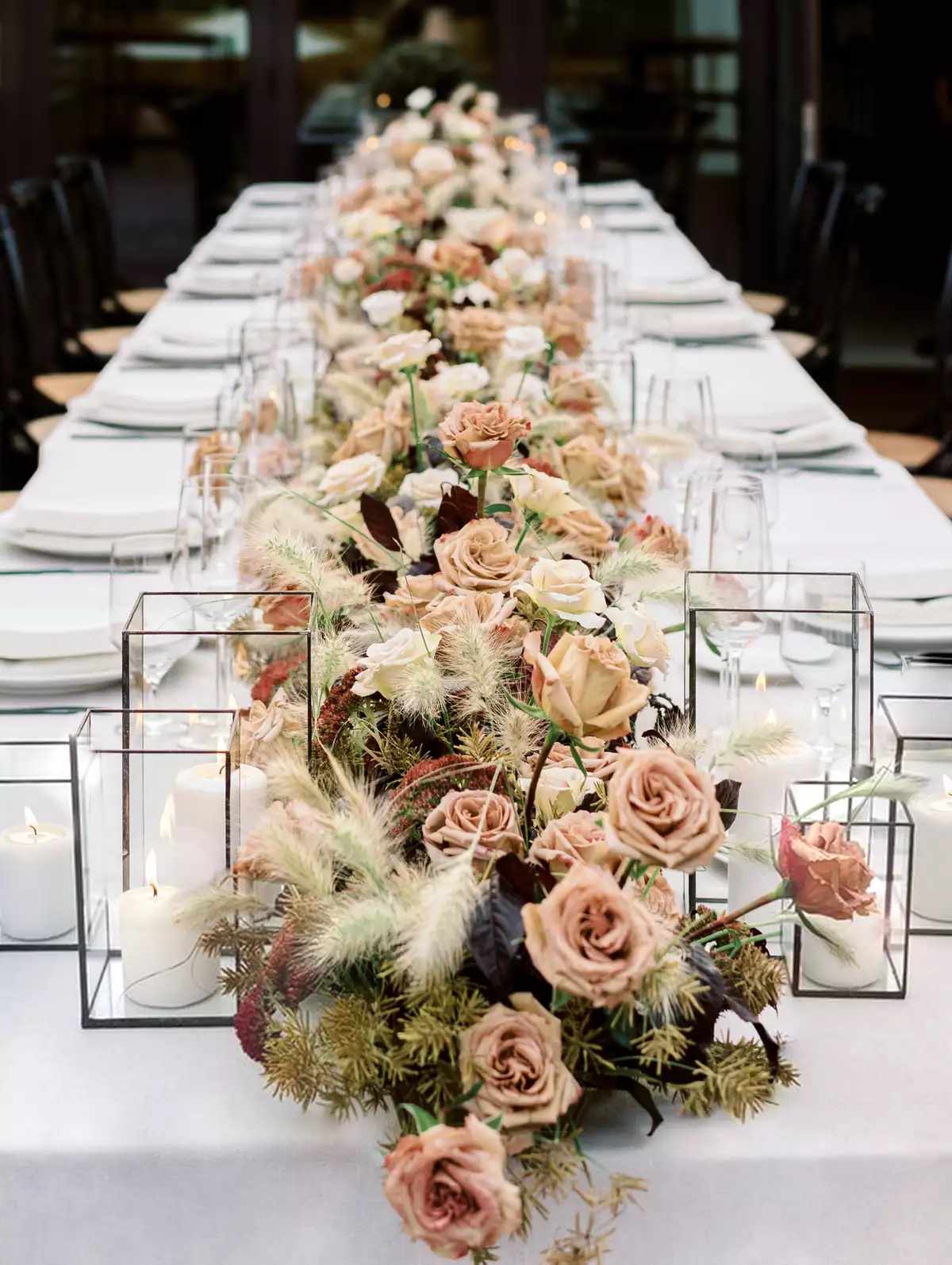
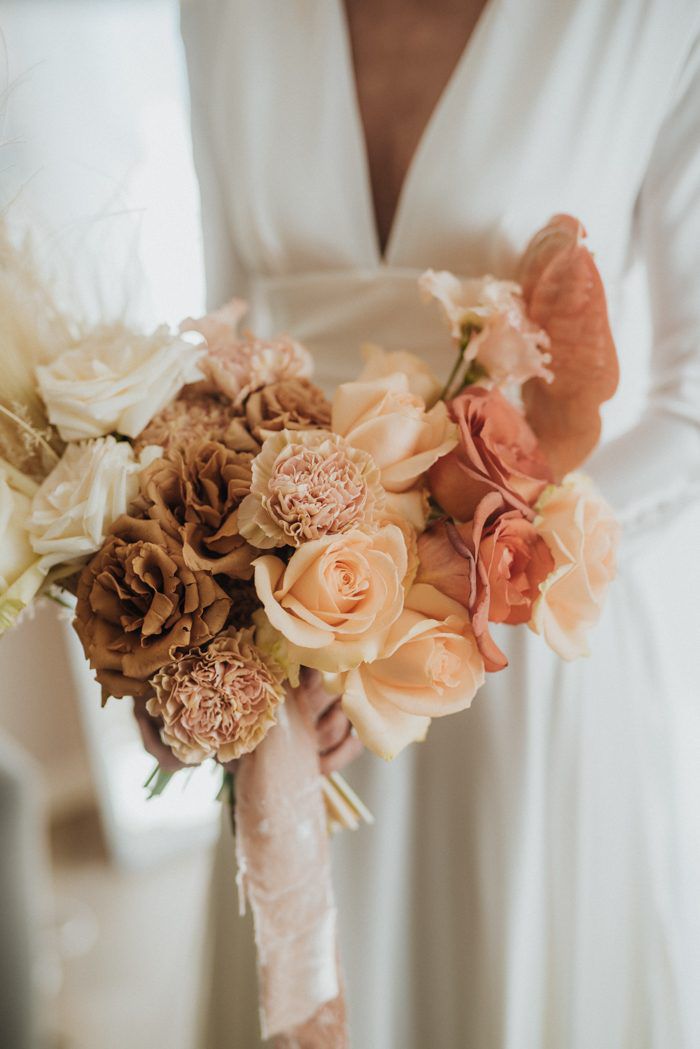
8. Use your wedding venue, theme and color palette as influences
Take your surroundings into consideration
Your wedding venue will greatly influence how you choose wedding flowers. If, for example, you're marrying in a park, botanical garden or vineyard, the flowers can be kept to a minimum, since you'll be surrounded by plenty of natural scenery anyway. If your venue is indoors, like a restaurant or banquet hall, you may need bigger, more impactful arrangements to build out the space. Either way, opt for arrangements that generally seem like they belong with the vibe of your setting: Clusters of boho wildflowers may look out of place in a formal ballroom the same way tropical, brightly colored flowers would seem to clash with a rustic setting.
The floral arrangements themselves can also convey a lot about your wedding style. Tighter bunches of traditional blooms, like peonies and roses, immediately evoke a classic look. Oversized arrangements with abundant greenery or pampas grass will take on a romantic, ethereal element. Architectural flowers, like calla lilies, orchids, anthurium, tend to look more modern. Work with your florist to pick the style that matches the overall wedding theme you're going for.
Be specific about colors
It's not necessary to have your wedding flowers identically match your color palette, but the arrangements should complement the rest of your decor and wedding attire. Most flowers bloom in more than one color, so be as specific as possible when you're describing what you want to the florist. For example, if you say you like pink roses, you may be thinking of soft, blush pink roses, when in fact there are dozens of light pink, dark pink and mauve roses your florist could choose from. Sharing examples of your wedding invitations, table linens and wedding day accessories can be a great starting point for your floral designer to understand your actual color scheme.
Next, think about the message that your color palette conveys. Pastel flowers, like sweet peas, lilacs, and anemones, are typically associated with ultra-romantic garden wedding themes. Vibrant blooms, like bright yellow ranunculus, fuchsia bougainvillea and orange lilies will add a fun, upbeat vibe. White flowers and muted greenery make for a timeless combination.
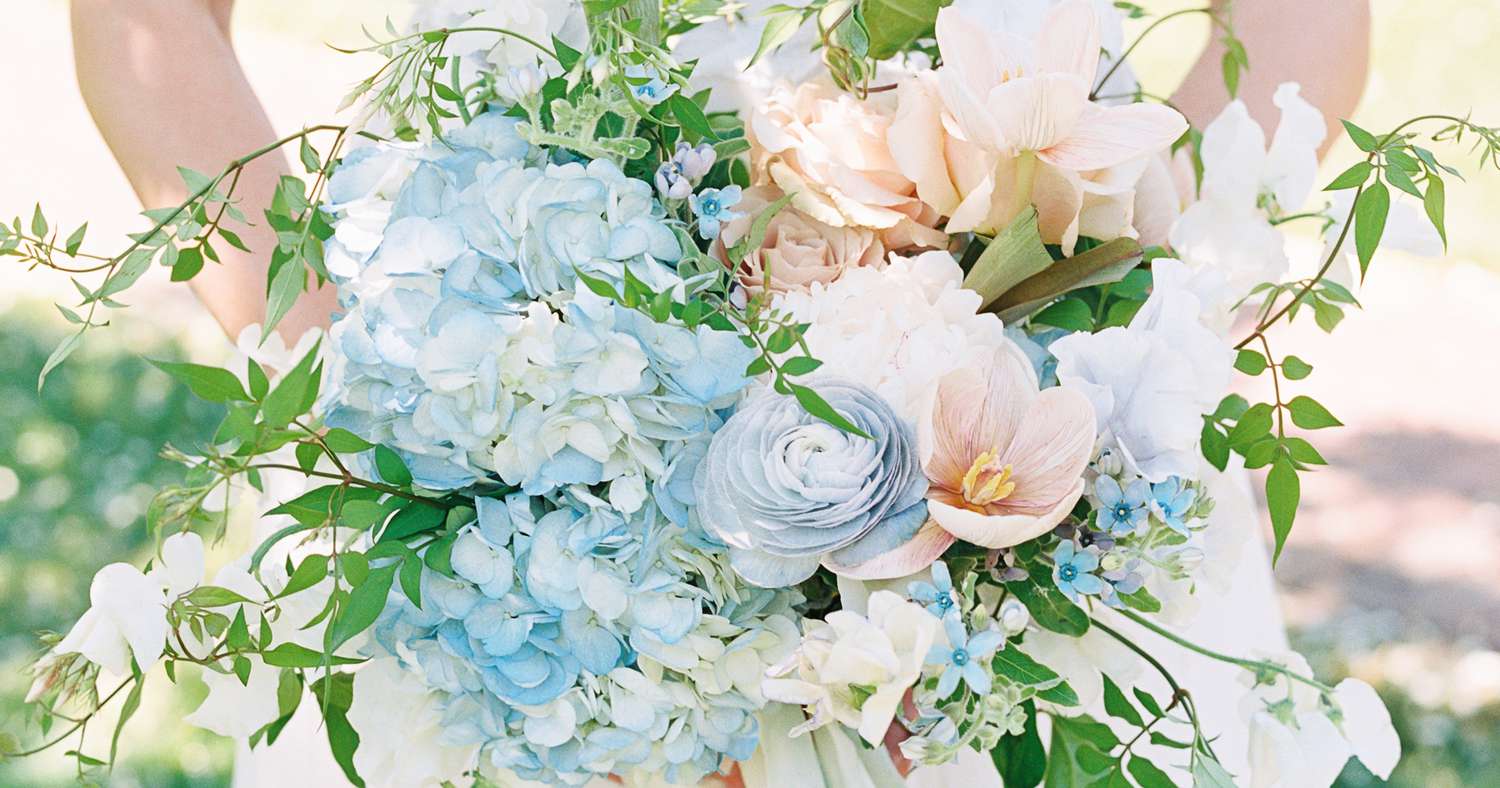
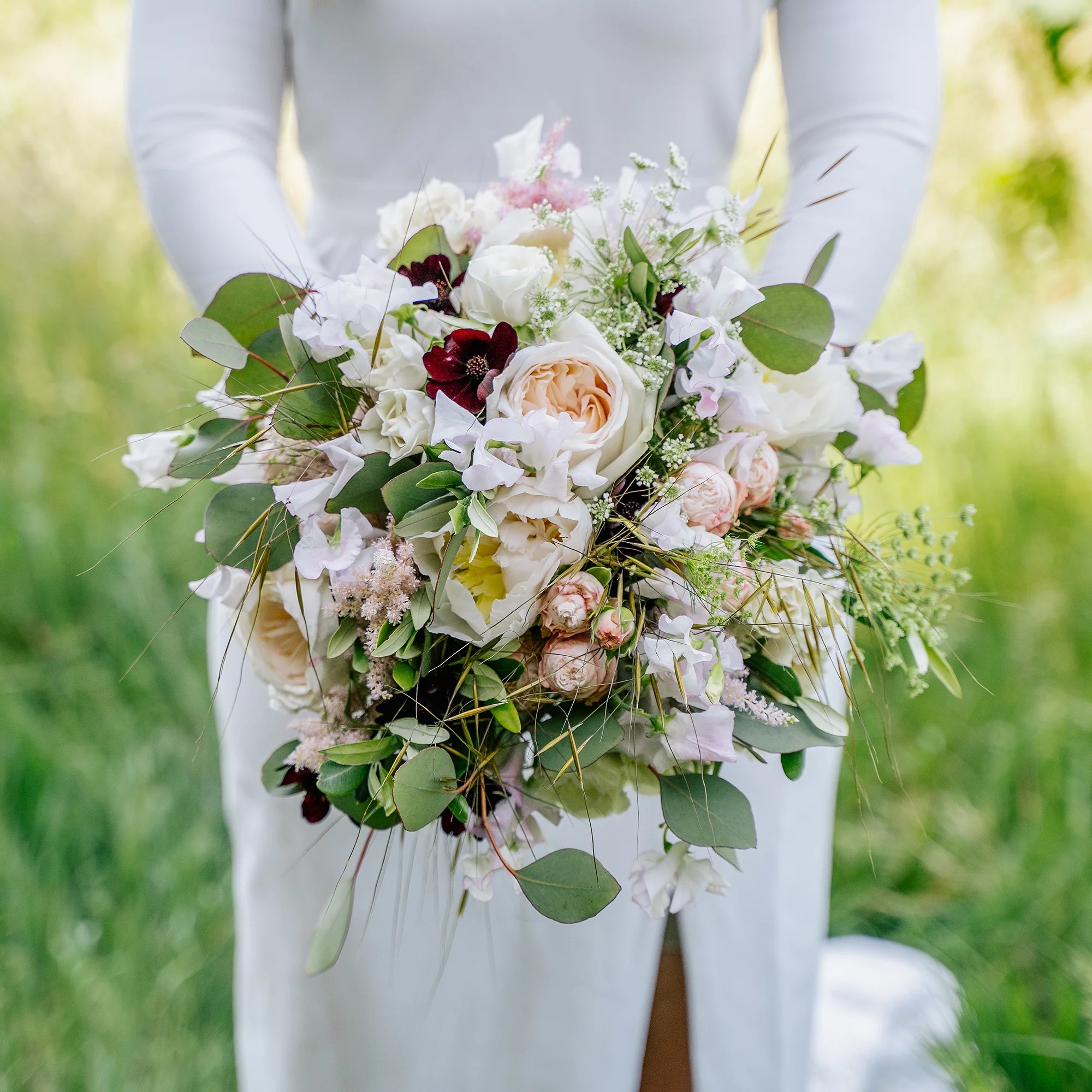
Your florist should be one of the first wedding vendors you hire—we recommend starting your search between eight and 12 months ahead of the wedding date. Because of the time and team required to create all of those stunning flower arrangements, wedding florists' calendars can book up quickly, especially if you're getting married during peak wedding season (May to October). Vetting florists early in the process will help you lock one in as soon as you can, and a longer lead time allows your florist to make any necessary orders for your specific wedding. We hope that this information has been useful and will help you along your wedding journey!
For more helpful information please do take a look at our other blogs.
The FWS team
x
